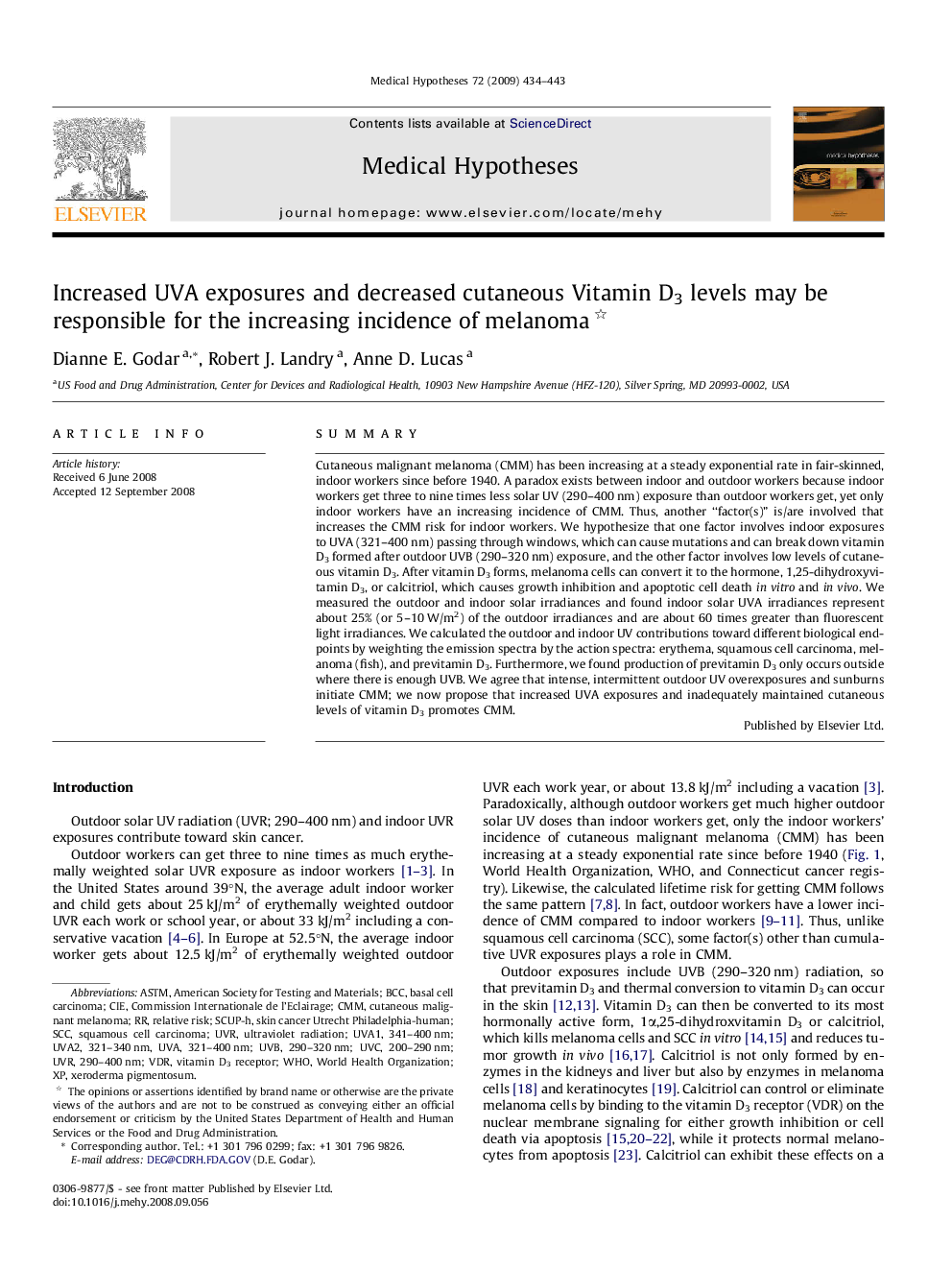| کد مقاله | کد نشریه | سال انتشار | مقاله انگلیسی | نسخه تمام متن |
|---|---|---|---|---|
| 2491012 | 1115078 | 2009 | 10 صفحه PDF | دانلود رایگان |

SummaryCutaneous malignant melanoma (CMM) has been increasing at a steady exponential rate in fair-skinned, indoor workers since before 1940. A paradox exists between indoor and outdoor workers because indoor workers get three to nine times less solar UV (290–400 nm) exposure than outdoor workers get, yet only indoor workers have an increasing incidence of CMM. Thus, another “factor(s)” is/are involved that increases the CMM risk for indoor workers. We hypothesize that one factor involves indoor exposures to UVA (321–400 nm) passing through windows, which can cause mutations and can break down vitamin D3 formed after outdoor UVB (290–320 nm) exposure, and the other factor involves low levels of cutaneous vitamin D3. After vitamin D3 forms, melanoma cells can convert it to the hormone, 1,25-dihydroxyvitamin D3, or calcitriol, which causes growth inhibition and apoptotic cell death in vitro and in vivo. We measured the outdoor and indoor solar irradiances and found indoor solar UVA irradiances represent about 25% (or 5–10 W/m2) of the outdoor irradiances and are about 60 times greater than fluorescent light irradiances. We calculated the outdoor and indoor UV contributions toward different biological endpoints by weighting the emission spectra by the action spectra: erythema, squamous cell carcinoma, melanoma (fish), and previtamin D3. Furthermore, we found production of previtamin D3 only occurs outside where there is enough UVB. We agree that intense, intermittent outdoor UV overexposures and sunburns initiate CMM; we now propose that increased UVA exposures and inadequately maintained cutaneous levels of vitamin D3 promotes CMM.
Journal: Medical Hypotheses - Volume 72, Issue 4, April 2009, Pages 434–443